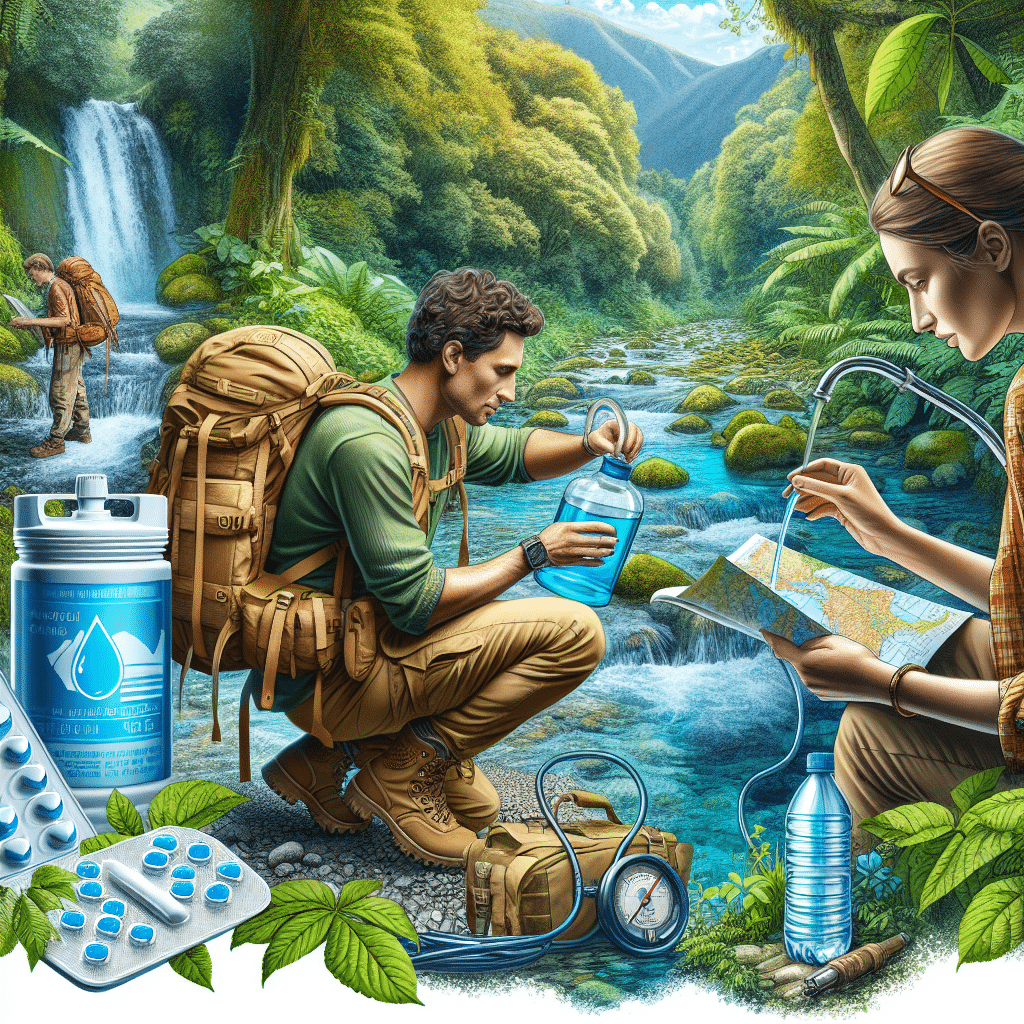Safety Tips for Drinking from Natural Water Sources
Understanding Natural Water Sources
Natural water sources include rivers, lakes, streams, and springs. While they can be beautiful and tempting, drinking from them without caution can expose you to harmful pathogens, pollutants, and toxins. Here are essential safety tips to consider when drinking from these water sources.
1. Assessing Water Quality
Before drinking from any natural water source, perform a visual assessment. Look for signs of contamination:
- Clarity: Clear water is more likely to be safe compared to murky or discolored water.
- Color: Avoid water that has an unusual coloration, as it may indicate chemical contamination or the presence of algae.
- Odor: If the water smells bad or has a chemical or fishy scent, it’s best to avoid it.
- Debris: Floating debris, dead animals, or excessive plant life can indicate poor water quality.
2. Understanding Potential Contaminants
Natural water can contain various contaminants:
- Biological: Bacteria (e.g., E. coli, Giardia), viruses, and protozoa are common in untreated water.
- Chemical: Pesticides, heavy metals, and industrial waste can leach into water sources, especially near urban areas.
- Physical: Sediments and organic matter can harbor bacteria and affect the water’s taste.
3. Choosing Safe Locations
When selecting a source:
- Avoid water near industrial activities, agricultural runoff, or urban areas.
- Choose areas that are away from livestock paths and heavy tourist traffic.
- Select flowing waters, like streams, instead of stagnant bodies, as flowing water is less likely to harbor harmful organisms.
4. Purification Techniques
If drinking from natural water, purification is crucial. Here are effective methods:
Boiling
- Boiling water is one of the most reliable methods to kill pathogens. Bring water to a rolling boil for at least 1 minute (longer at higher altitudes).
Filtration
- Use portable water filters, ideally those with a filter size of 0.1 microns or smaller, to remove bacteria and protozoa. Ensure the filter is rated for viruses if you’re not boiling.
Chemical Treatments
- Purification tablets containing iodine or chlorine can disinfect water. Follow the manufacturer’s instructions regarding dosage and wait time before consumption.
UV Light
- UV water purifiers can effectively kill bacteria and viruses. They require clear water to function optimally and can be a handy tool for campers and hikers.
5. Monitoring Symptoms
After consuming water from natural sources, be aware of any symptoms of waterborne illnesses:
- Stomach cramps, nausea, vomiting, diarrhea, and fever may indicate infections. Seek medical help if symptoms persist.
6. Staying Informed
Research local water quality reports or ask locals about the safety of drinking water in unfamiliar areas. Online databases may provide information on recent water testing and safety tips.
7. Seasonal Considerations
Water quality can fluctuate with seasons:
- Spring Thaw: Snowmelt can lead to increased turbidity and pathogen levels.
- Summer: Higher temperatures may encourage algal blooms, which can produce toxins.
- Autumn: Leaf litter can lead to increased bacterial counts in water.
8. Be Wary of Wildlife
Avoid drinking water from areas frequented by wildlife. Animals can introduce bacteria, viruses, and parasites. If the area is known for bird or mammal populations, it’s best to use purification methods, regardless of how clear the water appears.
9. Using Natural Indicators
Some plants can indicate water quality:
- Water Plant: The presence of certain aquatics like water lilies may suggest clean water. However, this is not a guarantee; always purify.
- Surrounding Flora: Healthy vegetation can indicate a cleaner environment, while an abundance of algae or decaying plants may point to pollution.
10. Hydration Essentials
Always carry extra water and purification methods, especially during hiking or camping trips. Dehydration can impair judgment, increasing the risk of consuming unsafe water.
11. Emergency Supplies
When venturing into the wilderness:
- Pack emergency water treatment supplies, including a small cooking stove for boiling, tablets, and a portable water filter.
- Carry a reusable water bottle to minimize waste and ensure hydration.
12. Educating Companions
If traveling in groups, educate fellow hikers or campers about safe water practices. Promote a culture of safety and communication regarding water choices and purity methods.
13. Regulations and Guidelines
Familiarize yourself with regulations regarding water use in different regions. Some areas may have restrictions to protect wildlife and public health.
14. Using Local Knowledge
Engage with local expert guides who know the area’s water sources. They can provide invaluable advice on which locations are safe for drinking and purification methods.
15. Personal Responsibility
Ultimately, the responsibility lies with you. Always prioritize the safety of drinking water, conduct thorough assessments, and carry necessary purification equipment. This approach minimizes your risk of illness and ensures a safe outdoor experience.
